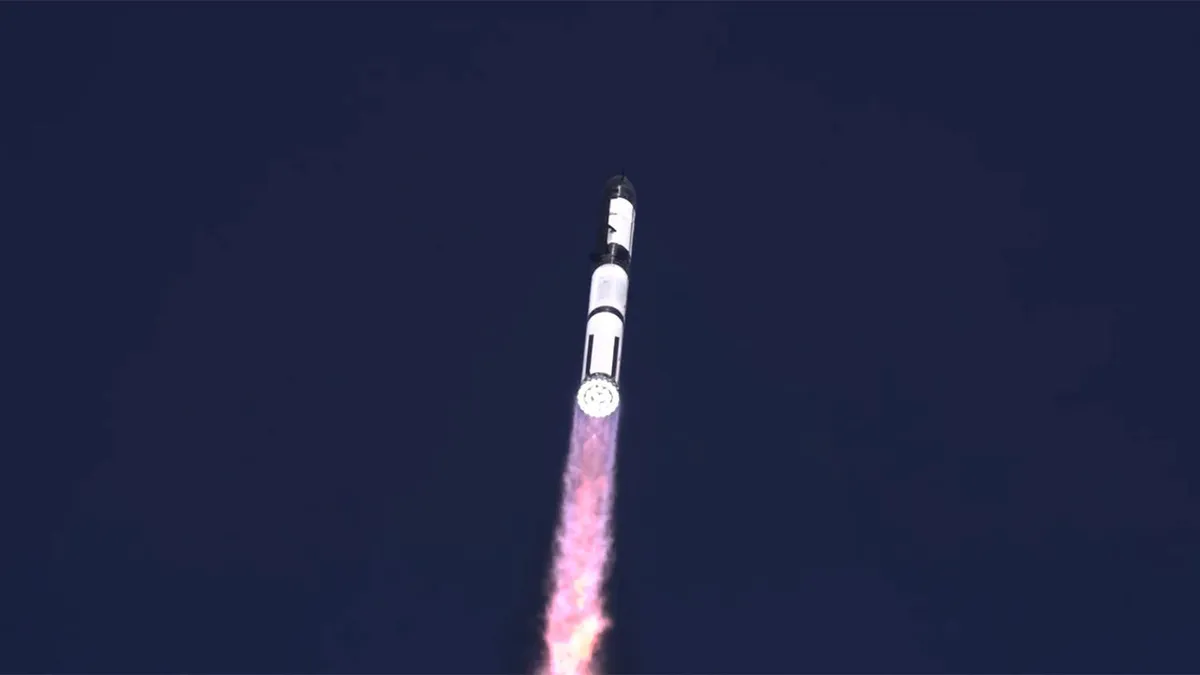
After an unsuccessful mission in January, SpaceX successfully launched its eighth suborbital flight test of the fully integrated Starship megarocket on Thursday. This launch took place at the company’s Starbase facility located in Boca Chica Beach, Texas. The mission involved the Starship's upper stage (S34) and the Super Heavy booster (B15). However, history appeared to repeat itself as the upper stage ascended into space, only to begin spinning uncontrollably, resulting in a loss of contact and the vehicle breaking apart. Debris from the disintegration fell back to Earth early Thursday evening.
One of the primary objectives of this flight was to successfully catch the Super Heavy booster using the launch tower's chopsticks, a goal that was achieved. During the ascent, however, the Starship experienced a rapid unscheduled disassembly, leading to a loss of contact. In response, SpaceX stated, "Our team immediately began coordination with safety officials to implement pre-planned contingency responses." The company emphasized that reviewing data from this flight will help identify the root cause of the issues faced, asserting that lessons learned from each test contribute to improving the reliability of the Starship.
As the flight unfolded, SpaceX announcers reported that contact with the Starship was lost, noting that a debris response plan was activated to ensure public safety. "We fly to learn," the announcers stated before concluding the broadcast. The upper stage was intended to coast in space for approximately 40 minutes before executing a soft splashdown in the Indian Ocean. Following the launch, a ground stop was issued for multiple airports in Florida, including Miami International, due to the potential threat from space launch debris, as indicated by the Federal Aviation Commission.
In the wake of a January investigation into a similar loss of the Starship during its seventh flight test, SpaceX implemented several hardware and operational changes aimed at enhancing the reliability of the upper stage. During that earlier test, all but one of the Starship’s engines executed controlled shutdown sequences, which ultimately led to a loss of communication with the spacecraft. A pre-coordinated response plan involving SpaceX, the FAA, and air traffic control was activated, ensuring minimal impact on the surrounding environment and public safety.
Thursday's flight was designed to follow the same suborbital trajectory as previous missions but targeted objectives that had not been accomplished in earlier tests. This included the deployment of Starship’s first payload and a series of reentry experiments aimed at returning the upper stage to the launch site for catch. The Starship was set to deploy four Starlink simulators, which are similar in size to the next-generation Starlink satellites, and were expected to become invisible upon reentry into the atmosphere.
The test included multiple experiments designed to ensure the Starship’s upper stage could successfully return to the launch site. These experiments involved removing numerous tiles to stress-test vulnerable areas and testing various metallic tile options to determine the best protection during reentry. Additionally, non-structural versions of Starship’s catch fittings were used to evaluate their thermal performance, while modifications were made to address hot spots observed in previous tests.
The Super Heavy booster featured upgraded avionics, including a more powerful flight computer, improved power distribution, and integrated smart batteries. SpaceX highlighted that specific criteria needed to be met before the booster could safely return and be caught. The conditions included ensuring healthy systems on both the booster and the tower, along with a final manual command from the mission’s flight director.
SpaceX also noted that if the necessary command was not issued before the completion of the boostback burn, or if automated health checks indicated unacceptable conditions, the booster would default to a trajectory for a soft splashdown in the Gulf of Mexico. "We accept no compromises when it comes to ensuring the safety of the public and our team," the company stated. Upon returning, the booster slowed from supersonic speeds, resulting in audible sonic booms in the vicinity of the landing zone. Generally, the only effect on local residents is a brief thunder-like noise, with factors such as weather and distance influencing the experience.